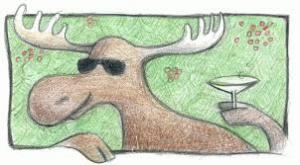Code comes and Code goes but the App goes on!
Well how about some coding today?
Lets look at the first little bits from my last post the 'View' and 'Element' and I am going to focus in on using it with SQL in this post. So we have this;
{
view => 'person',
elements => [
{ name => 'name' },
{
name => 'street',
view => 'address'
},
{
name => 'country'
view => 'address'
}
{
name => 'city',
view => 'address'
}
],
}
Now the question, 'How am I going to express the above in the code of my Data Accessor?' Do I just have one attribute that stores the above in a hash-ref? Do I break them down into two attributes a string and an array-ref of hashes Like this;
has view => (
is => 'rw',
isa => 'Str',
);
has elements => (
is => 'rw',
isa => 'ArrayRef',
);
Well the 'View' in SQL terms just the name of the Table (or View) that we are interested in, simple enough. Looking a little deeper most if not all implementations of SQL add in the concept 'Alias' for any table. So I can't have a simple scalar attribute I need a hash-ref at least. So my model expands
{
view => 'person',
alias => 'Me',
...
Now looking at an 'Element' which corresponds to a 'Field' in a 'Table' in SQL and I have already expanded my model by making it an array ref of 'Elements'. In SQL a Field can also have an 'Alias' and one can use expressions, functions, constants or even other SQL queries as a 'Field'. Now add on top of that the syntax for a field my change when they used in the differing 'SQL Clauses' one gets the picture that the Element is not simple at all.
What I did in the Data Accessor was to separate out the out these components into something like this
has view => (
is => 'rw',
isa => 'Object',
);
has elements => (
isa => 'ArrayRef',
is => 'rw',
);
and two packages like this
{ package
DA::View;
use Moose;
has 'name' => (
required => 1,
isa => 'Str'
is => 'rw',
);
has 'alias' => (
required => 1,
isa => 'Str'
is => 'rw',
);
}
{ package
DA::Element;
use Moose;
has 'name' => (
required => 1,
isa => 'Str',
is => 'rw',
);
has 'alias' => (
required => 1,
isa => 'Str',
is => 'rw',
);
}
Now I need some way to express the above in SQLish so lets on a sub like this to each
sub sql {
my $self = shift;
if ( $self->alias() ) {
return $self->name() . " AS " . $self->alias();
}
else {
return $self->name();
}
}
and I think we are in business. Just need to put them together somehow and I have defined that before with the '_execute' clause and in there I just do this
sub _execute {
my $self = shift;
my $delimiter = " ";
my $sql = "SELECT ";
foreach my $element ( @{ $self->elements() } ) {
$sql .= $delimiter . $element->sql();
$delimiter = ", ";
}
return $sql ." FROM ". $self->view()->sql();
}
And we are off to the races. Now to type this up and write up a test or two and see what come up.

 Long time Perl guy, a few CPAN mods allot of work on DBD::Oracle and a few YAPC presentations
Long time Perl guy, a few CPAN mods allot of work on DBD::Oracle and a few YAPC presentations
Leave a comment